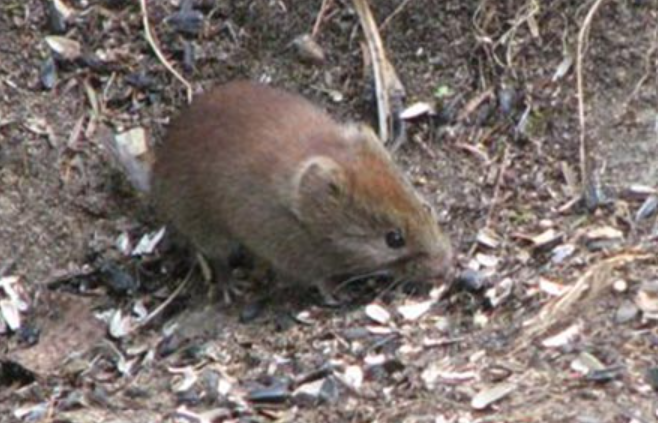Alaskapox claims first victim. What is the disease and how do you avoid it?
Alaskapox has claimed its first victim.
According to the Associated Press, an elderly man, who was undergoing cancer treatment, was hospitalized for the disease in late January and died last week.
The man, who lived in the remote Kenai Peninsula, was the first person to die of the disease, and only six other cases have been reported to Alaska health officials. This was the first one since 2015.
All previous cases were mild cases that didn't require hospital visits.
According to the Associated Press, the man lived by himself "in a forested area and reported no recent travel and no close contact with recent travel, illness, or similar lesions.”
It's unclear how AKPV is transmitted but researchers say it may be zoonotic, meaning it can jump from animals to humans. The bulletin said that tests found evidence of current or previous infection in several species of small mammals in the Fairbanks area, including red-backed voles, and at least one domestic pet.

While it's unknown how the disease is transmitted, it is possible that it has passed from animals to humans.
Health authorities also urged Alaskans to follow federal health precautions when around wildlife to avoid potential Alaskapox infections.
The U.S. Centers for Disease Control and Prevention recommends washing hands with soap and water after contact with wild animals or their waste. Hunters should always wear gloves when handling dead animals, even if they are freshly killed, the agency suggests.
The Alaska Division of Public Health has been monitoring Alaskapox. It posted the following on its website.
What is Alaskapox virus?
"Alaskapox virus is an orthopox virus that was first discovered in 2015 in a woman who lived near Fairbanks. This virus belongs to a group of viruses called orthopoxviruses. These viruses infect mammals and cause skin lesions."
Symptoms of Alaskapox virus
"People with Alaskapox have had one or more skin lesions and other symptoms like swollen lymph nodes and joint or muscle pain. Several Alaskapox patients initially thought they had a spider or insect bite. Nearly all patients had mild illnesses that resolved on their own after a few weeks. There has been one patient with an immunocompromising condition that developed severe disease and died after prolonged illness."
Where is Alaskapox virus found?
"Six of the known infections occurred in people who lived in the Fairbanks North Star Borough (FNSB) and one infection occurred in a person who lived in the Kenai Peninsula Borough. While animal trapping studies have confirmed the presence of the virus in small mammals in FNSB, it is likely that the virus is present more broadly in Alaska’s small mammals and that more infections in humans have occurred but were not identified. More animal testing is occurring to better understand the distribution of the virus in animal populations throughout Alaska."
Where does the virus come from?
"We believe that Alaskapox virus primarily occurs in small mammals. Through two rounds of small mammal sampling conducted in 2020 and 2021, the presence of the Alaskapox virus has been confirmed in two specific species within the Fairbanks North Star Borough: red-backed voles and shrews. However, evidence also suggests the virus is present in various other small mammal species in Alaska and its prevalence extends to areas outside of the Fairbanks North Star Borough. We are not sure exactly how the virus spreads from animals to people but contact with small mammals and potentially domestic pets who come into contact small wild mammals could play a role."
Can people with Alaskapox infect other people?
"While human-to-human transmission of AKPV has not yet been observed, some orthopoxviruses can spread by direct contact with lesions (particularly broken skin contact with lesion secretions). Therefore, we advise individuals with skin lesions potentially caused by Alaskapox to keep the affected area covered with a bandage and avoid sharing bedding or other linens that have come into contact with the lesion."
What should I do if I think I have Alaskapox?
"Talk to a health care provider. They can assess whether your symptoms might be caused by Alaskapox o something else. Keep the lesion covered and avoid touching it."
This article originally appeared on Asbury Park Press: Alaskapox kills elderly man in remote part of Alaska

